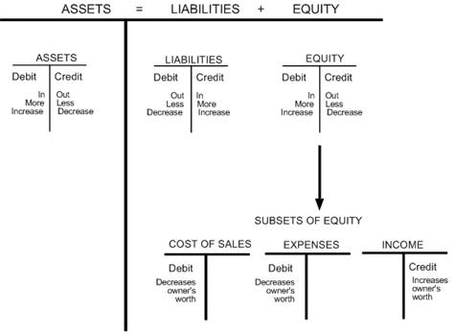

On the contrary, when an amount is accounted for on the opposite side of its normal balance, it decreases that amount. When an amount is accounted for on its normal balance side, it increases that account. Included below are the main financial statement line items presented as T-accounts, showing their normal balances.Ī normal balance is the side of the T-account where the balance is normally found. Debits are presented on the left-hand side of the T-account, whereas credits are presented on the right.

To better visualize debits and credits in various financial statement line items, T-Accounts are commonly used. Breaking down the above example of depositing a $100 check from both perspectives - banking and accounting, users can see, that while it appears as a “credit” to the user depositing the check, it is really just the bank’s off-set to the receipt of the check. While the two might seem opposite, they are quite similar.

But for accounting purposes, this would be considered a debit. For example, when making a transaction at a bank, a user depositing a $100 check would be crediting, or increasing, the balance in the account. Accountĭebits and credits differ in accounting in comparison to what bank users most commonly see. The following chart shows the direction of debits and credits in various accounts as well as each account’s normal balance. Debits and credits either increase or decrease the following accounts: asset, liability, fund balance, revenue, and expense. When accounting for these transactions, two entries must be made: a debit and a corresponding credit.ĭebits and credits are what make up journal entries in a general ledger. Introduction to Normal Balances What are Debits and Credits?Įntities make financial transactions on a day-to-day basis in order to continue running business operations. Information presented below walks through specific accounting terminology, debit and credit, as well as what are considered normal balances for IU. This section discusses fundamental concepts as they relate to recordkeeping for accounting and how transactions are recorded internally within Indiana University.


 0 kommentar(er)
0 kommentar(er)
